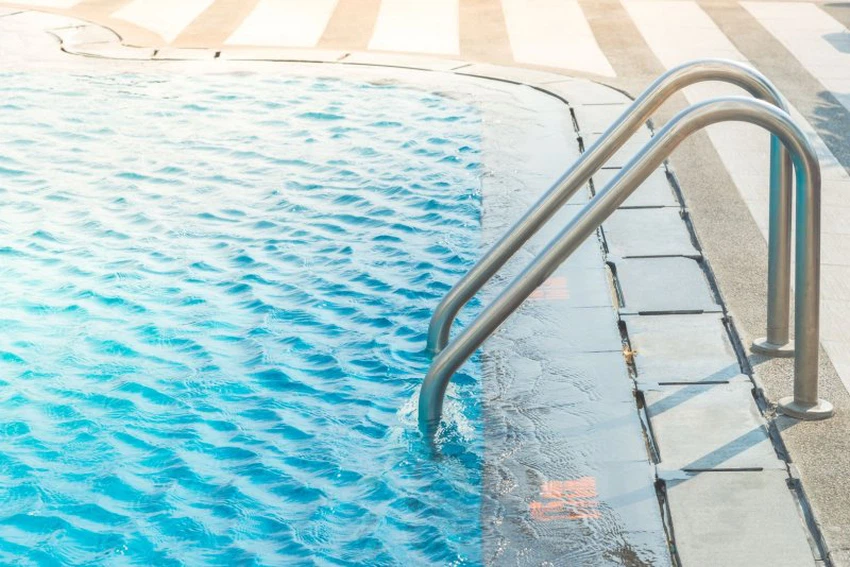Swimming pool chlorine may change the color of your hair... as well as many other risks
ArabiaWeather - If you dye your hair, you should be careful when swimming in pools that contain chlorine, as hair dyed blonde can turn green. In addition, there is a possibility that chlorine will cause some health problems for pool users.
Tomato sauce is a solution to remove chlorine from your hair
Dr. explains. Nitin Setohal, a chemical analyst and expert in forensic toxicology at the University of Nottingham, said that the copper present in hair dye reacts with chlorine, which leads to the hair turning green. He added in a report published on the website of the British newspaper “Daily Mail” that if it starts... Hair may turn slightly green after swimming twice. You can try to neutralize the chlorine effect by spraying vitamin C spray or by rubbing tomato sauce on freshly washed wet hair, leaving it for five minutes and then rinsing it. Tomato sauce can help remove the green color.
You may also be interested in:
In the summer...things you should be careful of while in the pool
The importance of adding chlorine to swimming pools
Regarding chlorine in swimming pools, Situhel says that when added to water, chlorine has an effective effect in eliminating a wide range of dangerous bacteria and viruses, and contributes significantly to eliminating diseases such as typhoid and cholera in developing countries, and adding chlorine is considered very safe in drinking water. At the levels recommended by the World Health Organization, which is one part per million or less, but the problem occurs when chlorine is added at higher levels of about two or five parts per million, which are levels required to keep swimming pools clean.
For his part, Dr. says: Andrew Wright, professor of dermatology at the University of Bedford, according to the Daily Mail, says the problem is not the chlorine itself, but the chemical byproducts (chloramines) that form when chlorine reacts with nitrogen found in dirt and human waste in swimming pools, such as skin particles. Sweat, urine, bacteria, and body oils.
Dr. adds: I saw that it is these byproducts that give off the distinctive odor we associate with swimming pools, and that cause problems. The more pungent the smell, the more likely it is that the pool is unhealthy.
A recent study that included fifty athletes, published in the British Journal of Sports Medicine, showed that almost all of the swimmers included in the study had inflammation of the lung tissue, and most of the changes were apparent in those who spent the most time in swimming pools containing chlorine.
Children are believed to be most at risk; Because they tend to spend more time in the pool than adults, and are more likely to swallow water.

Chlorine risks to health
Despite its many uses, chlorine has great harms. When it enters the body through breathing or swallowing, it interacts with water molecules on the mucous surfaces inside it, producing harmful acids such as hydrochloric acid and hypochlorous acid.
The harms of chlorine depend on several factors, such as the method of exposure to it, the dose of chlorine to which the person was exposed, and the length of time of exposure. It is important to note that most harmful exposures to chlorine occur as a result of inhalation at high concentrations.
Symptoms of chlorine poisoning usually begin to appear within seconds to minutes, and the most common symptoms include:
-
Respiratory symptoms, including:
- Cough and difficulty breathing
- The presence of fluid inside the lungs, known as pulmonary edema, which may develop immediately after exposure to chlorine or may occur delayed.
- Airway irritation
- Wheezing and difficulty breathing
- sore throat
-
Gastrointestinal symptoms, including:
- Burning sensation in the mouth
- Pain and swelling in the throat
- stomach pain
- Vomiting
- Blood in stool
-
Effects on blood circulation, such as:
- Changes in the pH balance of the blood
- Drop in blood pressure
-
Eye injuries, such as:
- Blurred vision
- Eye irritation
- Vision loss
-
Effects on the skin:
- Skin damage resulting from burns and irritation
- Frostbite of the skin and eyes (Frostbite)
Chlorine also causes eye and skin irritation, and in more serious cases, severe burns and ulcers may occur.
See also:
Arabia Weather App
Download the app to receive weather notifications and more..



